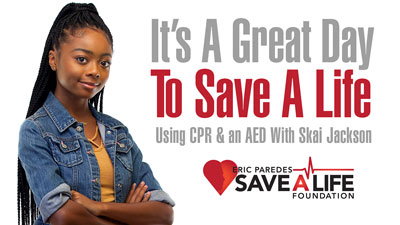Anyone Can Use An AED To Save A Life
AEDs Were Made for the General Public to Use
Studies have shown that the majority of people report a lack of confidence in using an AED. And many think they’re not even allowed to use one.
But public access defibrillators are onsite because when Sudden Cardiac Arrest stops a victim’s heart, the only way to restart it is with an AED. And every minute’s delay decreases the chance of survival by 10%. Improving survival depends on shocking a victim within 3 – 5 minutes of collapse. Research has shown that 9 in 10 victims who receive a shock within the first minutes survive.
Given the average arrival time for EMS is 6 to 13 minutes, that means we all need to be prepared to use an onsite AED, and to advocate for accessible AEDs to in all places youth congregate.
myth
Fact
An AED should be kept safely locked away.
You must be a medical professional to use an AED.
AEDs are onsite for EMS to use when they arrive.
EMS should be the first to deliver CPR and AED.
You must be trained to use an AED.
You must be an adult to use an AED.
You’re responsible for determining if the victim needs to be shocked.
You can hurt someone with an AED.
You are liable if you try to use an AED and the victim does not survive.
An AED should ALWAYS be accessible.
AEDs are designed for the public to use.
AEDs are meant for bystanders to retrieve and use within minutes of a person’s collapse.
The average arrival time for EMS is 6 to 13 minutes so bystanders must take action first.
No training necessary—an AED talks you through the steps.
Research shows 11-year-olds can properly apply an AED after minimal instruction.
The AED device analyzes the heart rhythm.
An AED will only deliver a shock if needed—you can’t mistakenly shock a victim.
The Good Samaritan Law is a national standard that protects anyone who helps in good faith.
Have a Cardiac Emergency Response Plan where you live, learn, work and play. Check out what that looks like.
Find more videos to operate other brands of AED devices at Save Station.


